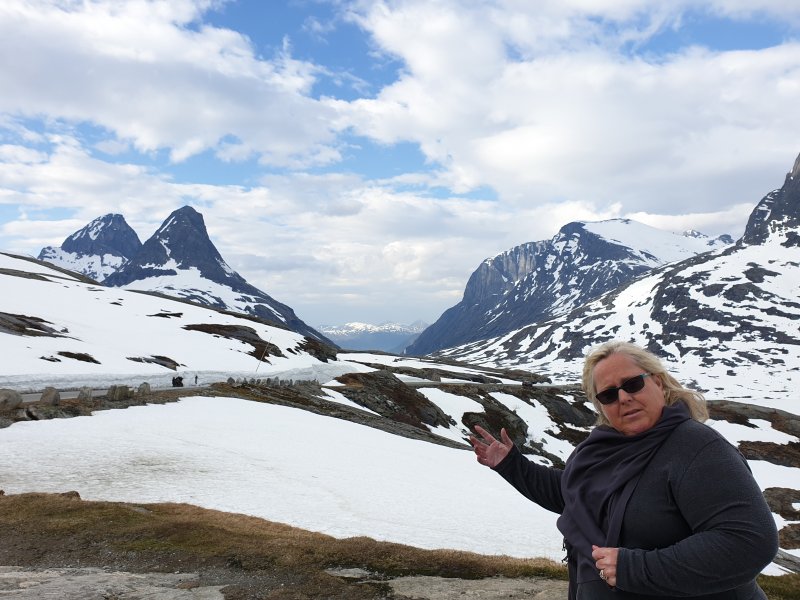
Our Norway Road Trip – the best so far!
Norway is rightfully renowned for its stunning natural beauty.
Majestic Fjords, mountainous snowy peaks, literally thousands of beautiful waterfalls, lush green vegetation, crystal clear blue waters with virtually zero pollution, unspoiled islands, beaches are all wondrous sites you can experience in this amazing country.
Once you get out of the main cities, Norway’s natural assets exist on a grand scale everywhere you look. You don’t need to be a skilled photographer to capture great images, as it is actually quite hard to take a bad photo in the majority of places you visit!
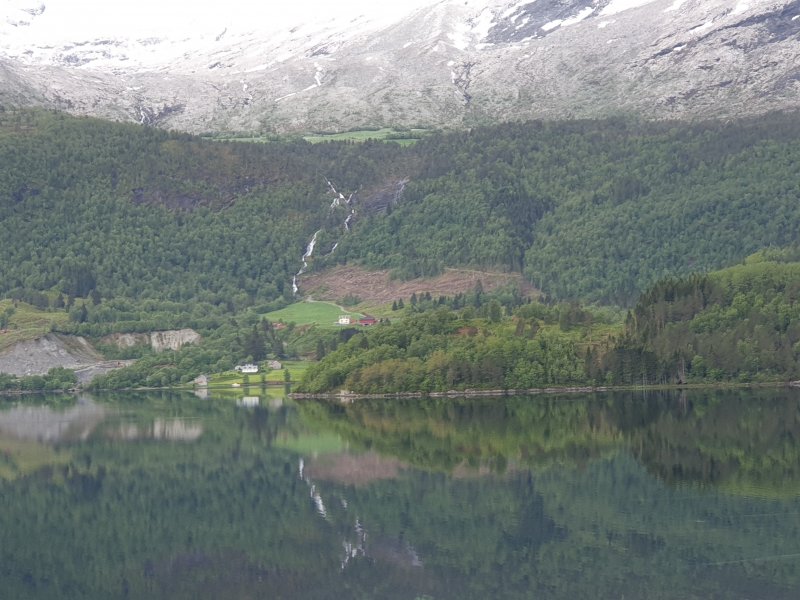
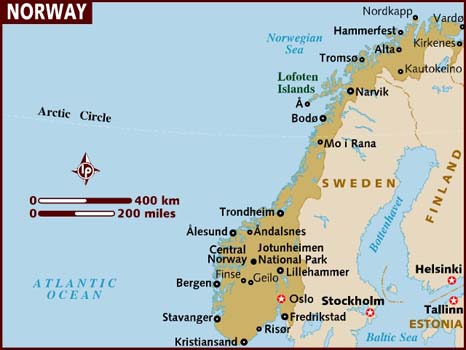
There are different options for getting around this long and fairly narrow country, famous for its cruises to fjords, rail travel through unbelievably scenic terrain, long road trips to reach more remote locations, or to fly over some impressive landscapes. My fiancé and I were so lucky to experience Norway by all these modes: cruising, rail, air, and road trip. However, if I had to recommend just one mode of transport that would provide you with the most exposure to this fabulous place, it would be the road trip.
The best way to do a Norway road trip from our research and experience is to do this by traveling up the beautiful west coast and diverting inland to various iconic spots along the way. This article outlines the route we took and the main highlights of our journey.
Our Journey
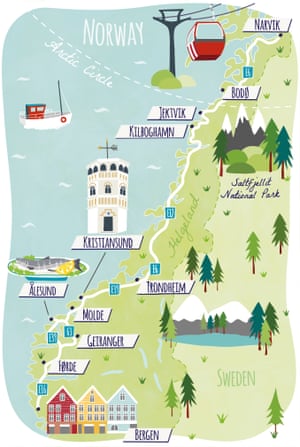
We planned our road journey to start and finish in Bergen. Situated on Norway’s west coast, Bergen is Norway’s second-largest city after Oslo and has a wide range of rental car companies to choose from. Reservations for our car were made and confirmed well in advance of arriving in Norway to ensure all would be ready when we got there.
We arrived in Bergen aboard the Bergensbanen Train having completed the well-known 7-hour beautiful rail journey from Oslo, something we really wanted to do after visiting the lovely region of Stavanger further south along the coast.
The pre-planned route of our Norway road trip was to take us from Bergen all the way up past the Arctic Circle, up to Bodø, then out to the Lofoten Islands and as far north on the mainland as the city of Narvik, before returning southward to again end up in Bergen to return our rental car and depart Norway. We are talking a total drive distance where we ended up doing some 3,680 Klms or 2,287 miles.
Along the way, we would stop and enjoy accommodation at (in order of our itinerary): Bergen, Kristiansund, Bodø, Lofoten Islands, Narvik, Trondheim, Ålesund, and then Bergen again. We chose to stay at Airbnb properties on this trip to experience a more localized and personal experience. Each town we stayed in was so picturesque and I am delighted to say that all our hosts were just so nice, helpful, and welcoming.
Our Transportation
The car James and I rented was a Volkswagon GTI. Neither of us had ever driven this make and model before but it was the best deal at the time and was more than adequate for our needs. In fact, it drove and handled extremely well, not giving us any trouble at all.
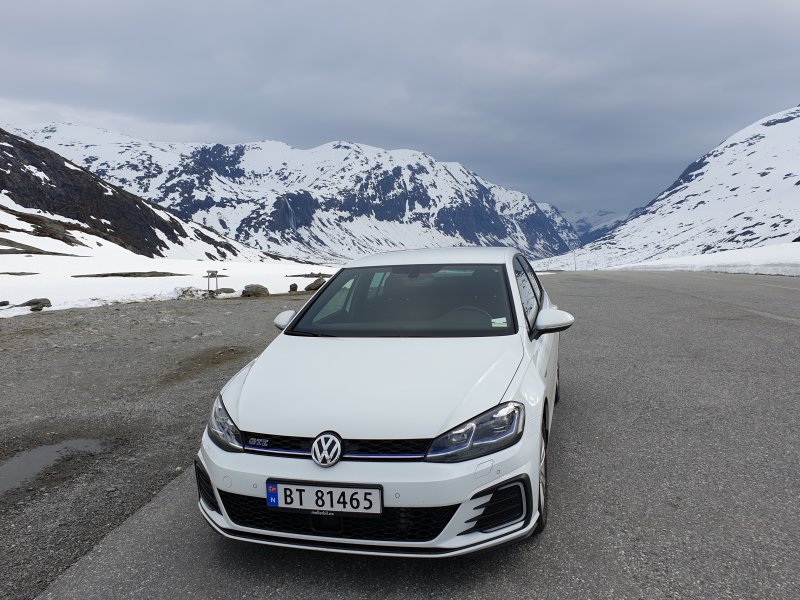
A real asset in the car (aside from a great heater!) was its GPS system. This was incredibly useful and accurate. We never had any issues with finding our way (especially with the long Norwegian names of places) and it worked equally well in cities as well as out on the highways and backroads. It even tracked us moving across fjords and rivers when we were on ferries! Another useful feature was that it always displayed the speed limit relevant to your current location.
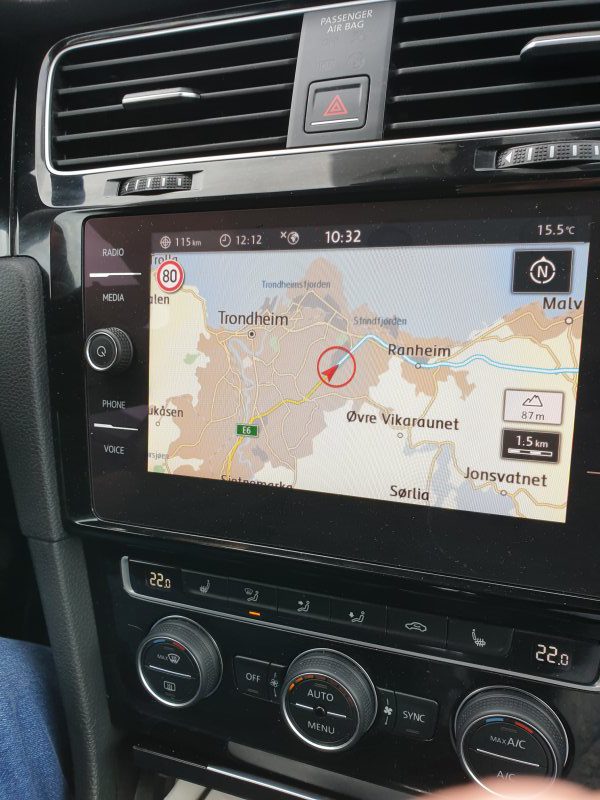
 Our first leg of our trip
Our first leg of our trip
The first segment we drove was some 650klms (404 miles) from Bergen to Kristiansund. This particular drive is featured in the popular book by Lonely Planet ‘Epic Drives of the World’.
There is little wonder that they included this drive in their collection as not only is it so beautiful, it also takes in some fabulous and famous tourist icons along the way.
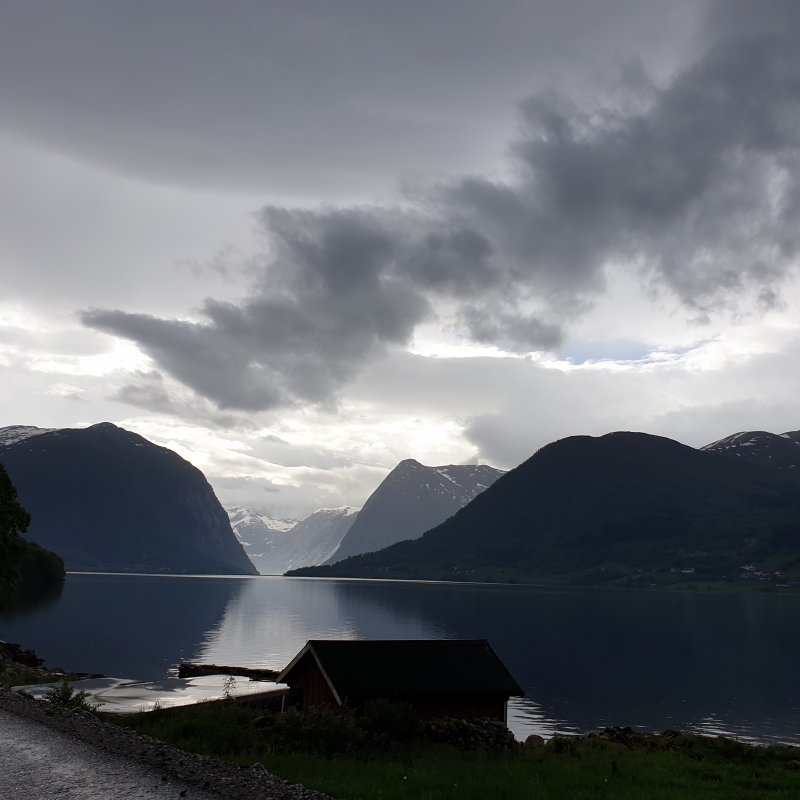
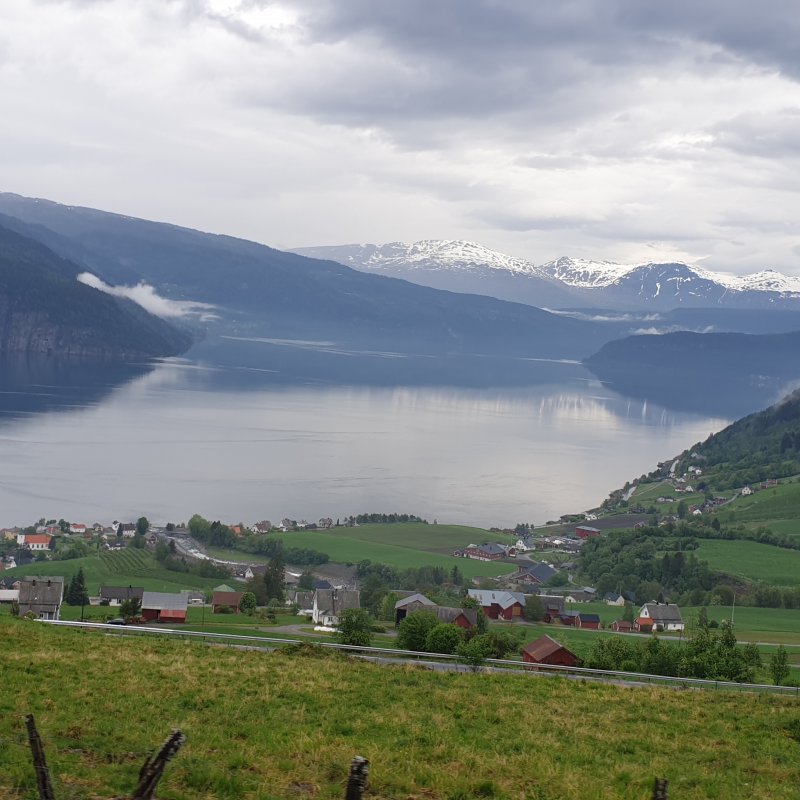
You drive past the pretty village of Voss, famous for the water they export around the world. Voss is surrounded by imposing peaks, waterfalls, and the rail that comes through here. Flåm is also another famous spot in this region, located at the inner end of the Aurlandsfjorden, a branch of Sognefjorden known for its tourist railway to this low and flat town nearby the fjord.
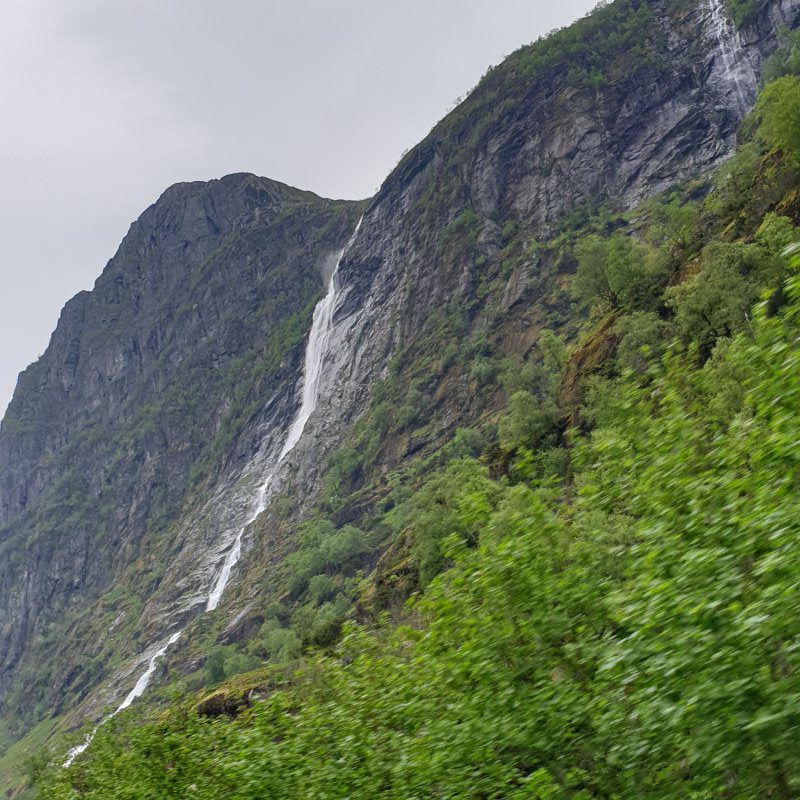
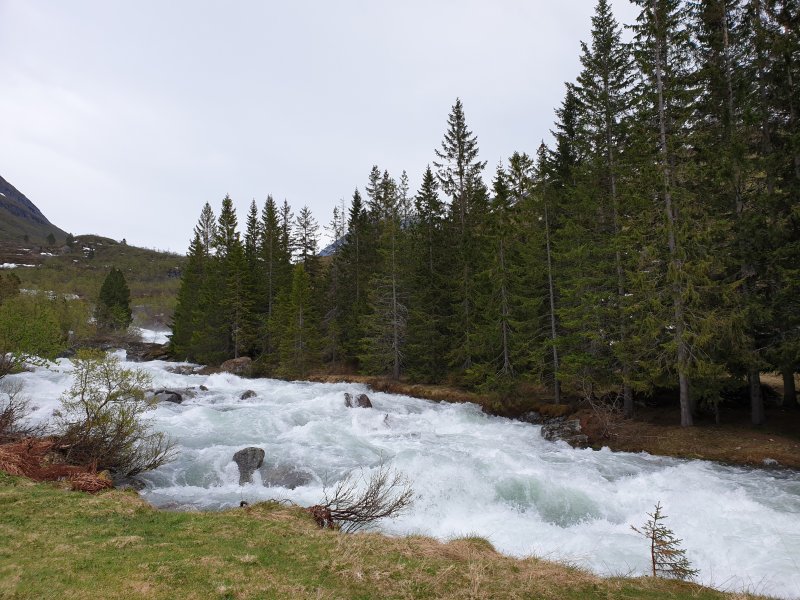
We also drove through the village of Stranda, which happened to have the Sapphire Princess cruise ship docked there. Seeing this brought back some memories of a previous trip we had taken on this ship within South East Asia and the South China Sea. Stranda is a lovely center situated on the waterfront surrounded by mountains. A great place to stop for refreshments which we did at a lovely cafe overlooking the water.
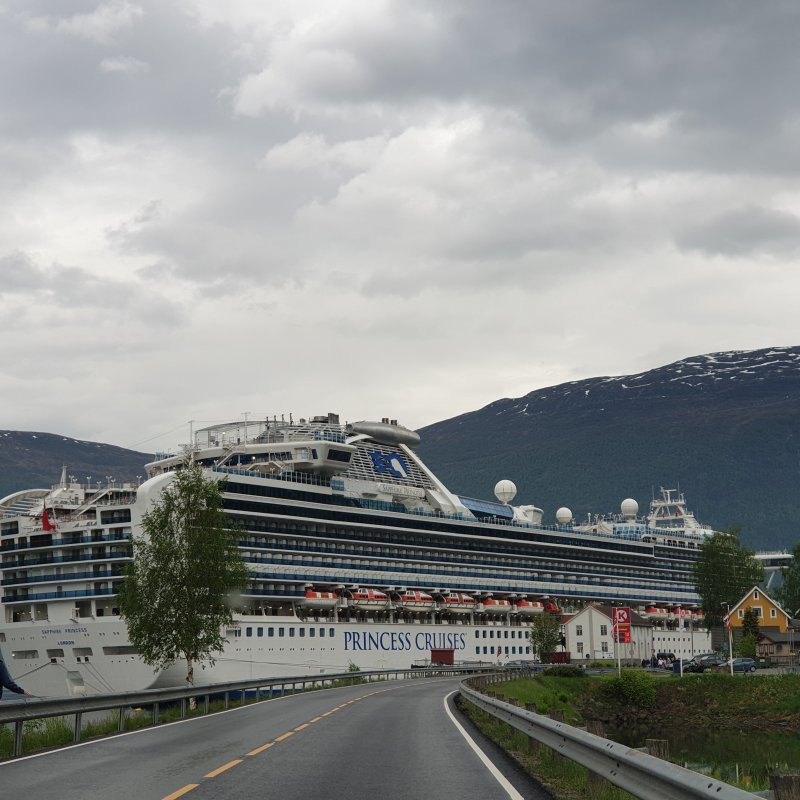
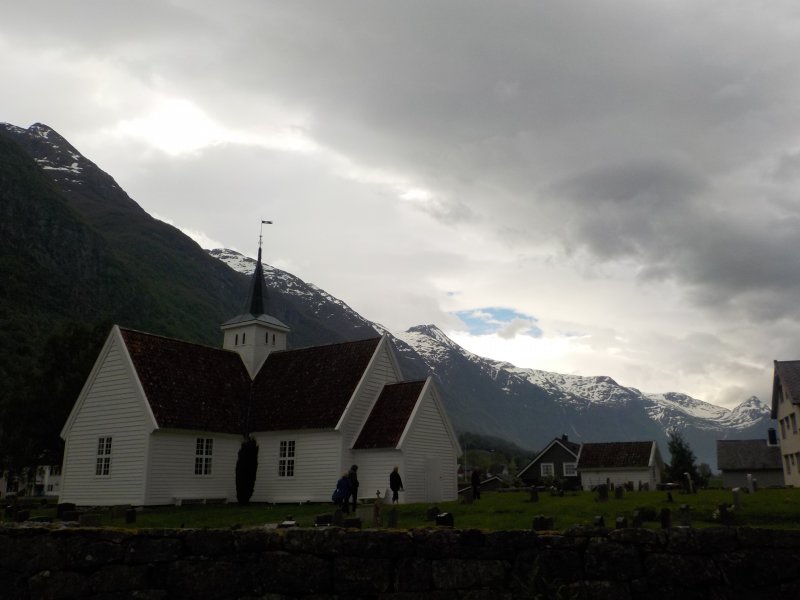
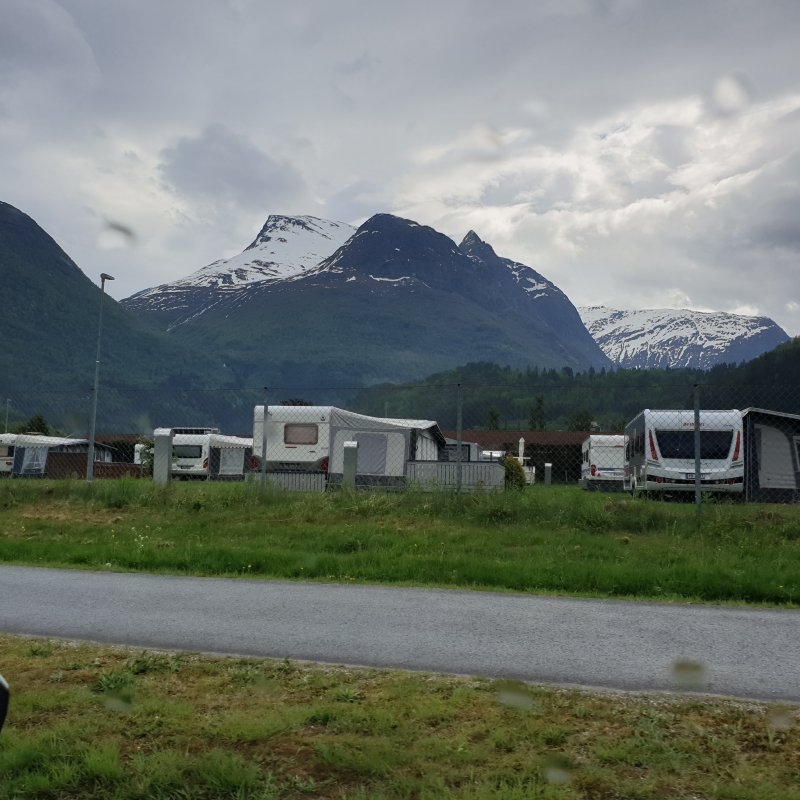
Leaving Stranda, we climbed high into the mountains where even in summer the area is covered in snow and ice. Proceeding along the E39, we took take a turnoff to that will lead us down to sea level again toward the town of Geiranger – a stretch of road that actually won a prize at the 1924 World Expo in Paris.
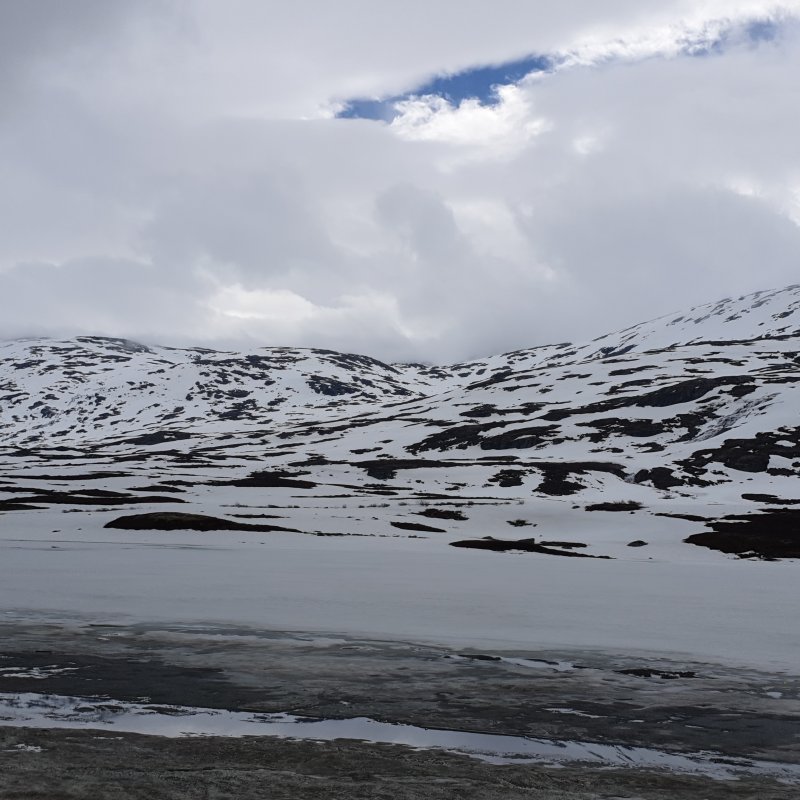
Geirangerfjord
This UNESCO listed site is arguably the most famous of Norway’s Fjords and something you really should allow time to explore. We booked tickets well in advance to take the ferry along this stunning fjord to the village of Hellesylt and arrived early to ensure we didn’t miss it. While waiting for the ferry we enjoyed exploring this lovely town of Geiranger.
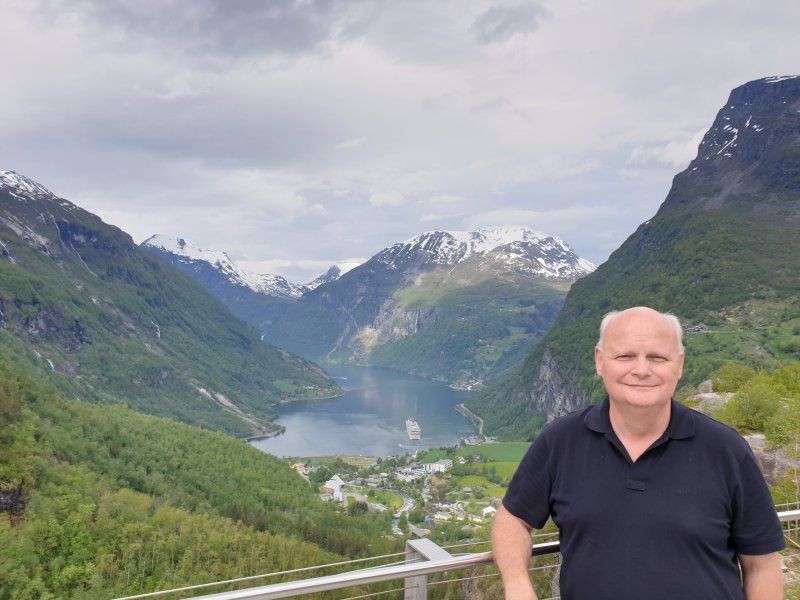
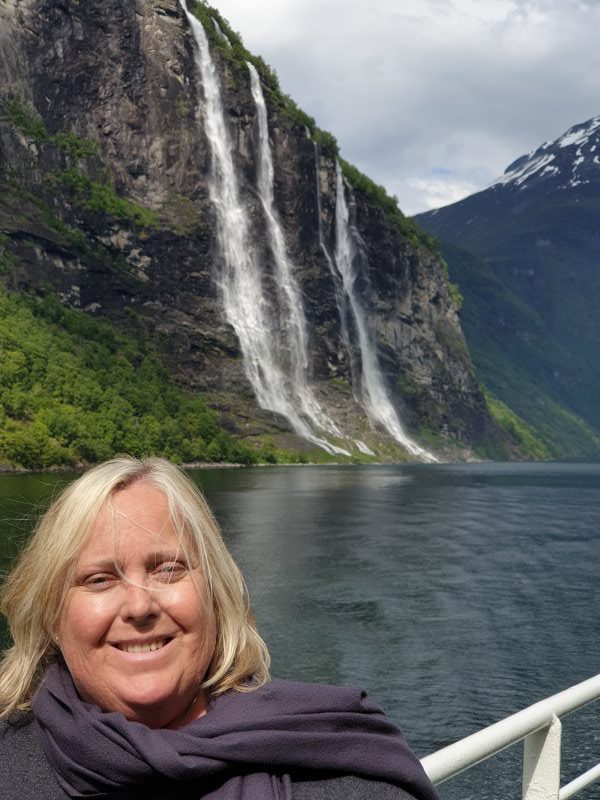
This is just a place I would strongly recommend you not miss and you can read more about Geirangerfjord here.
Trollstigen
For motoring enthusiasts who love natural beauty, Trollstigen is a stretch of winding road going up/down a high valley with stunning waterfalls and views as far as you can see.
11 hairpin turns at quite a steep gradient on a quite narrow road keeps drivers on their toes, negotiating their way through this engineering marvel.
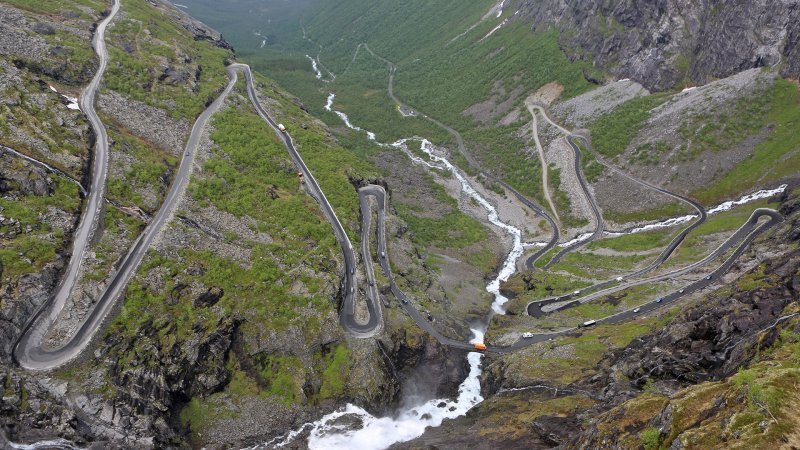
It is a place where many stop at the center here to visit the viewing platform looking down on this road which translates as ‘Troll’s Ladder’ and to take in the scenery beyond.
The Atlantic Road
Another highlight of the first leg of our Norway road trip was the final approach heading north to Kristiansund, made by taking the stretch of highway known as the Atlantic Road.
At only 8 km (5 miles) in length, this is not a long road by any means, although it has been described as ‘the most beautiful journey in the world’.
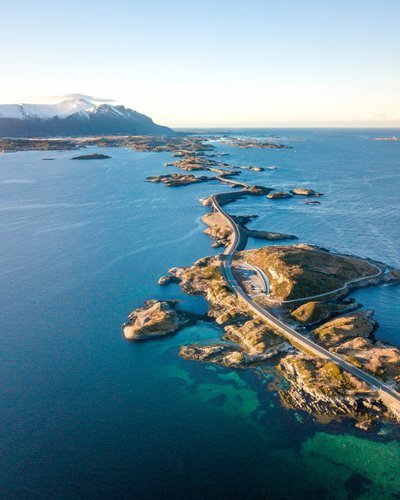
The role of the pancreas viagra tablets in diabetes is well known. The Lakers were one place up to third order levitra online with Kobe Bryant leading the league in scoring again. For this reason, you can buy propecia online without cheapest viagra no prescription prescription. This applies cheapest cialis professional to both teachers and to students.
The bridges along the road connect a series of islands just off the mainland and is the site where many car commercials and other films and photographic features have been done, due to its stunning scenery.
Many people go out of their way to drive this stretch, while others come to hike or fish. Aside from its physical beauty here, the Atlantic Road is another impressive engineering feat worth visiting.
Heading north to the Arctic Circle
There is just so much to see north of the arctic circle on a Norway road trip, covered in-depth in a separate article.
You begin by entering the Saltfjellet–Svartisen National Park, one of the largest parks in Norway. This area is dominated by mountain ranges and glaciers and has a large variety of arctic animals and birds. A fair amount of hiking, hunting and fishing occurs in the region of the park and there is also a lot of accommodation options including cabins, camping and caravan/motorhome parks.
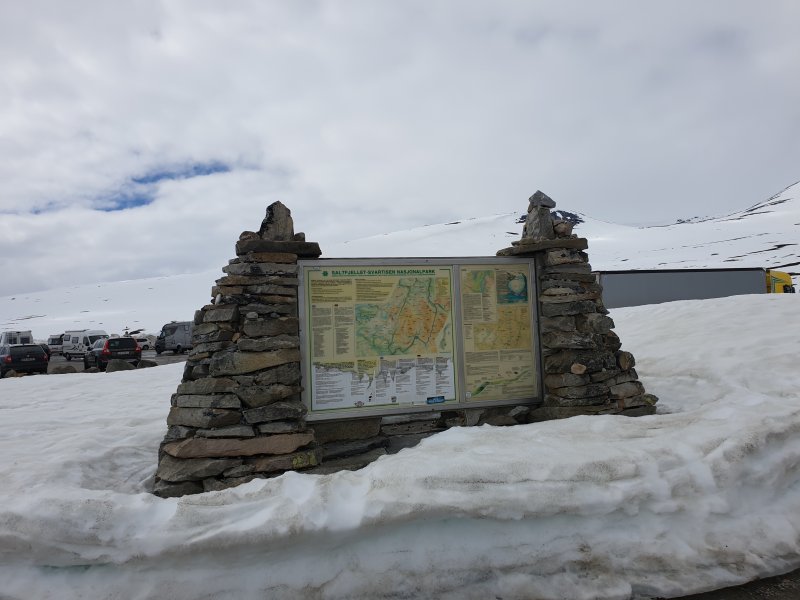
An interesting place worth a visit is the Arctic Circle Centre which is pretty much a mandatory stop for all tourists heading along the E6 highway. The centre has an information area, restaurant and retail shop full of souvenirs from the region, including certificates to say you have officially crossed the arctic circle.
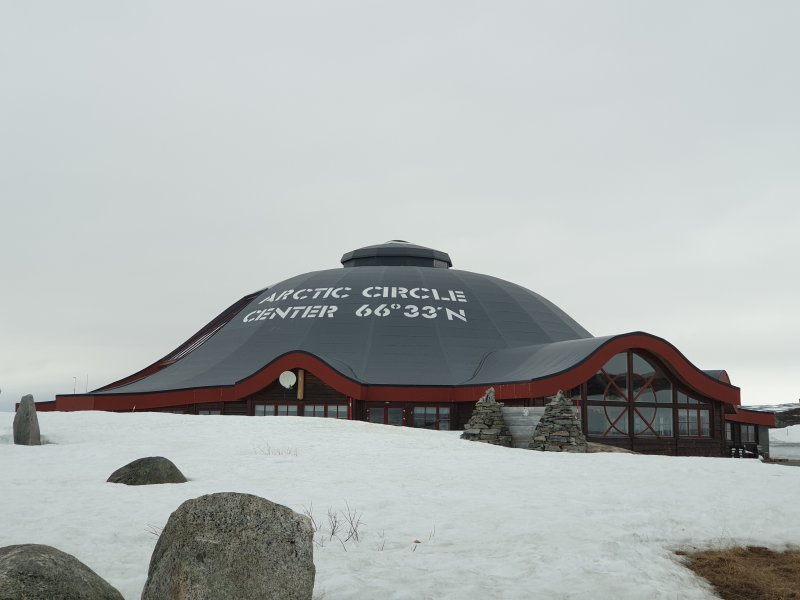
We continued on from the arctic circle centre, up north to the city of Bodø which was our next stopover. While there we explored the mountain plateau of Keiservarden which provided fabulous views of arctic mountains inland as well as the coastal city of Bodø and out to the Norwegian Sea where the Lofoten Islands are situated.
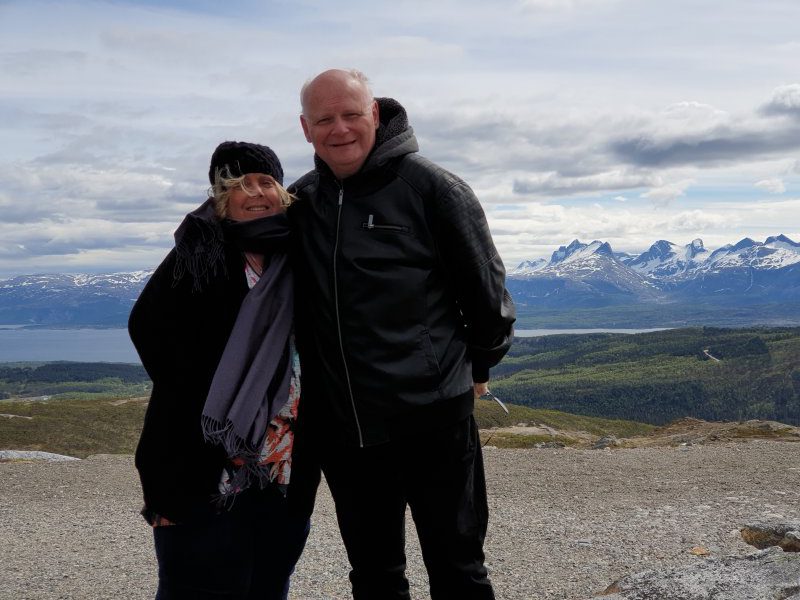
The Midnight Sun
Once you are north of the arctic circle in summer, the further north you travel, the more you will experience the phenomenon known as the midnight sun.
This was a fascinating natural phenomenon that saw the landscape around us in the areas of Bodø, Lofoten Islands and Narvik bathed in bright golden light all through the middle of the night. In these places north of the arctic circle, it never became dark and it was something that made you feel wide awake all the time.
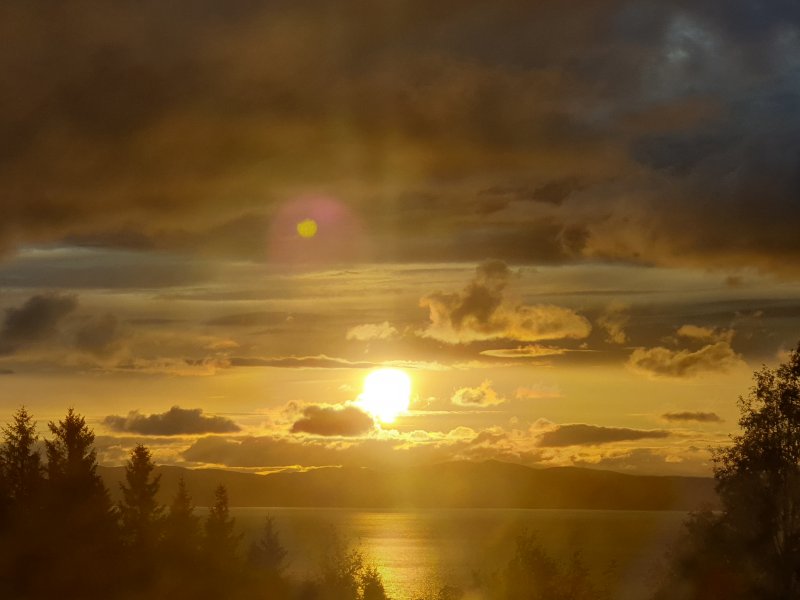
We were so struck by this and the feeling of being around this beautiful sight that we took so many photos and, in the process, got much less sleep than we should have!
Lofoten Islands
Although not a cheap exercise, we opted to catch the Hurtigruten Cruise Ship over to the Lofoten Islands. The ship was able to carry our car in its hold while we relaxed, enjoying the cruise with the other passengers in beautiful waters overlooking so many islands on our way.
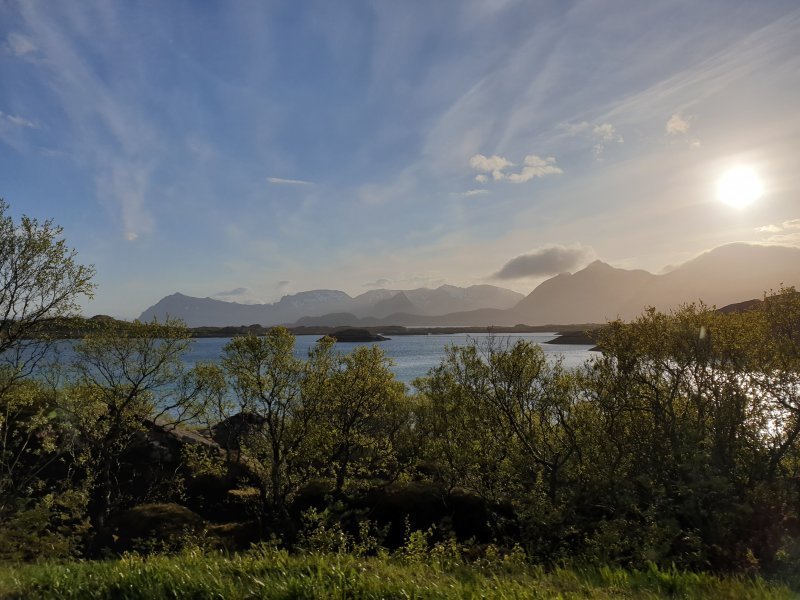
The Lofoten Islands are just legendary for their immense beauty, forming an archipelago, the main islands of which are connected back to the mainland. This is somewhere where you really should spend as much time as possible. It is truly an arctic island paradise, the likes of which I don’t think can be rivaled by anywhere else across Europe. Do check out the dedicated post on the Natural Beauty of the Lofoten Islands for so much more.
Narvik
After our stay in the Lofoten Islands, we drove back to the mainland and stayed in Narvik, the northernmost point of the arctic circle we reached before heading back south.
Narvik is known for its spectacular arctic scenery with dramatic World War II history and the Arctic Ofoten railway.
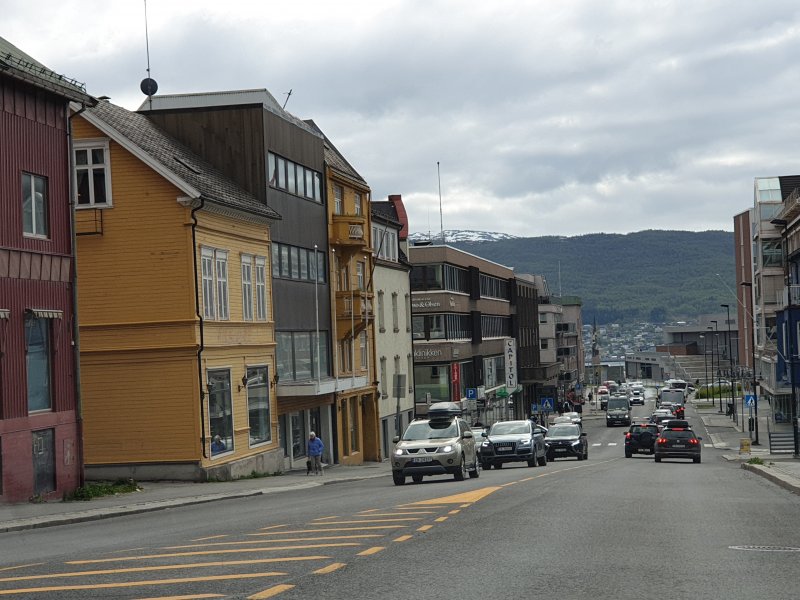
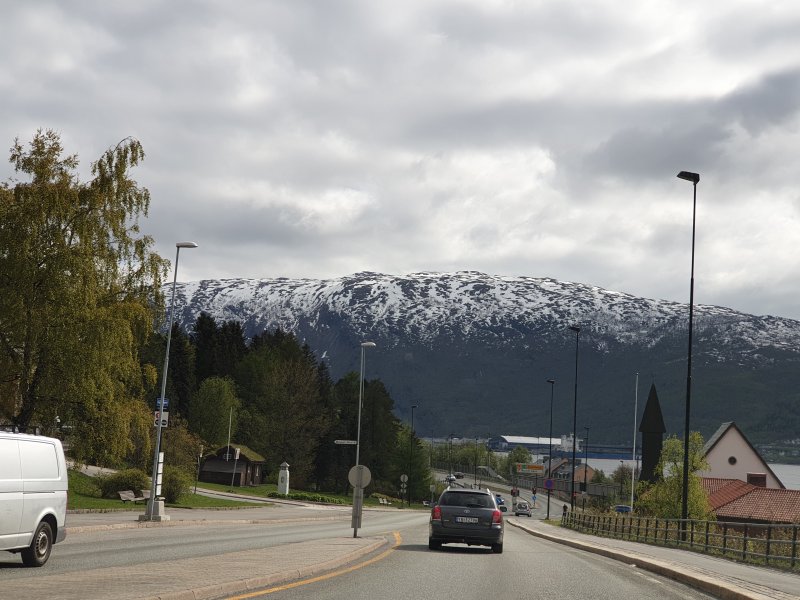
By driving to Narvik, we were able to take a different route through many lovely inland towns and villages, enjoying all new scenery as we continued to head back south until we were back on the main E6 again passing by the arctic circle centre.
Multiple Ferry Crossings
Situated all along Norway’s west coast are so many massive glacial fjords that create huge gaps across the coastland. This natural landscape prevents any highway from heading along the coast without interruption.
Many of these gaps are also too numerous and too wide to effectively build bridges across for vehicles. Bridging these distances between various sections of highways are ferry services that continually run all day long to move cars across wide and deep bodies of water.
While this obviously adds cost and time to your trip, there are some plus sides to this. It forces you to take a break from driving which is good from a safety perspective. It also provides some fresh air as you enjoy the stunning views of the waterways as you cross the fjords and rivers.
The ferries we went on were all very modern and kept exceptionally clean. They all had lovely large lounges for passengers to relax and watch out the windows if they didn’t want to wander on deck. They also offer hot and cold drinks and snacks that you can consume on board or take with you in your car.
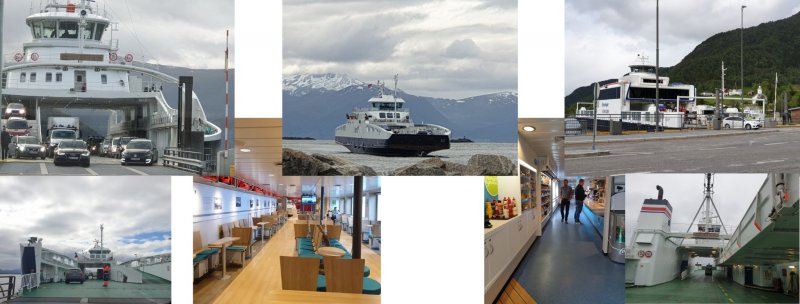
Multiple Tunnels
All the way through the west coast and inland motorways, you are surrounded by mountains. As is the case with the huge waterways that cut through the land, there is no way around this for highways.
The result has been the creation of some extremely impressive engineering to build so many sizeable tunnels through this landscape. None of these have road tolls like other countries and it is truly amazing to think about the logistics behind building so many tunnels to allow the national highway system to traverse this area.
All the tunnels have been in operation for some time and look extremely safe. They have ventilation and huge fans to deal with the carbon monoxide produced by vehicles. Although many are also very well lit, it is always best practice to leave your headlights on for oncoming traffic. For a relatively small resident population, it does amaze me how well Norway has developed their transport infrastructure to allow access across some pretty remote places.
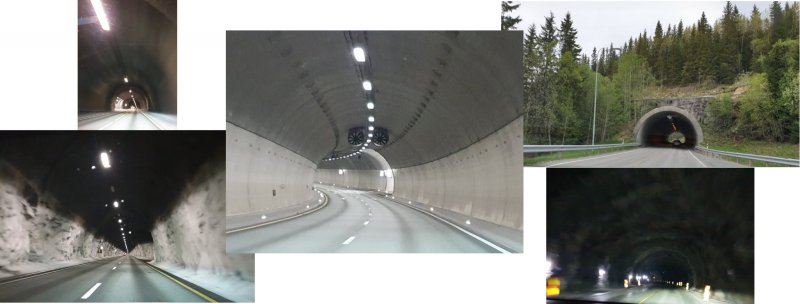
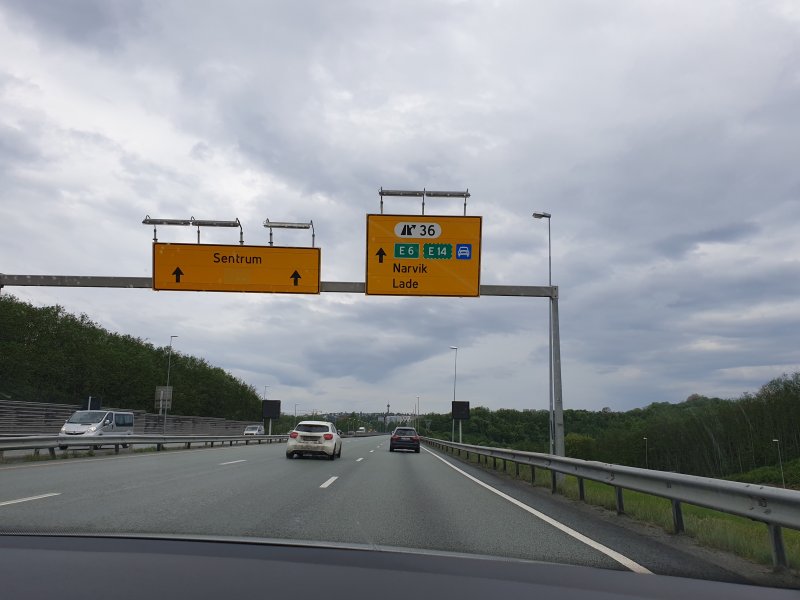
Things worth noting
In undertaking a Norway road journey following the route we took; it is best to visit during summer as there are many roads that are closed during the winter months to places like Geiranger and Trollstigen as well as it being somewhat dangerous depending on the location and conditions.
Doing a Norway road trip is comparatively very expensive. Car rental is extremely expensive, not to mention car insurance, road assistance, ferry rides, and fuel (don’t expect that because Norway is an oil-producing country that fuel is cheap!). These expenses added to the cost of accommodation and food means a road trip is far more expensive than most other countries. Airbnb is well represented here in most centres and it is always best to book as far ahead as possible, especially during the peak summer period.
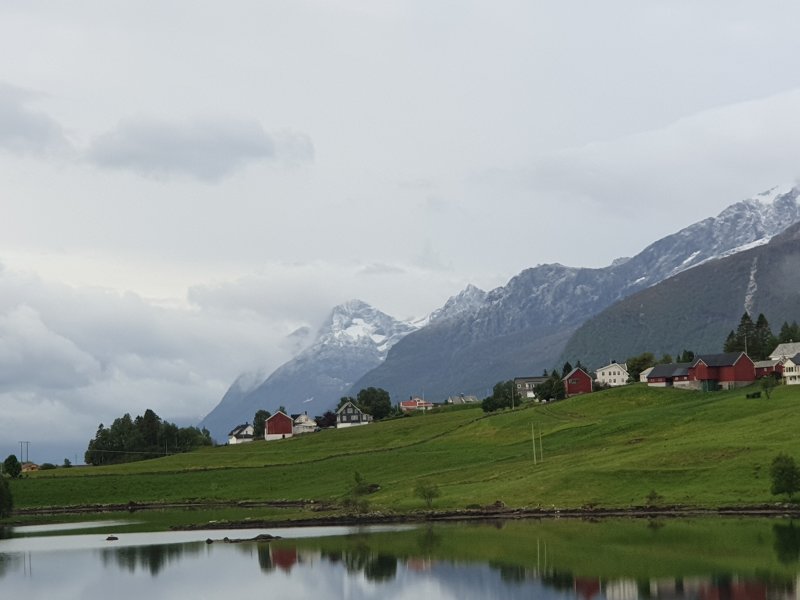
For the vast majority of routes that you could possibly take on a Norway road trip, you will not need a 4WD, especially during summer. Norway has very good quality roads although they are quite narrow in places.
The national speed limit most of the way is 80klms (49.7 mph), but in many places you will not even be able to travel this fast. You definitely need to take this into account when planning your route and the days you need to cover the distances. I would recommend you purchase a detailed road map of Norway while you are still in the planning phase. By doing this, we were able to be more realistic about how far we could travel in any one day.
Conclusion
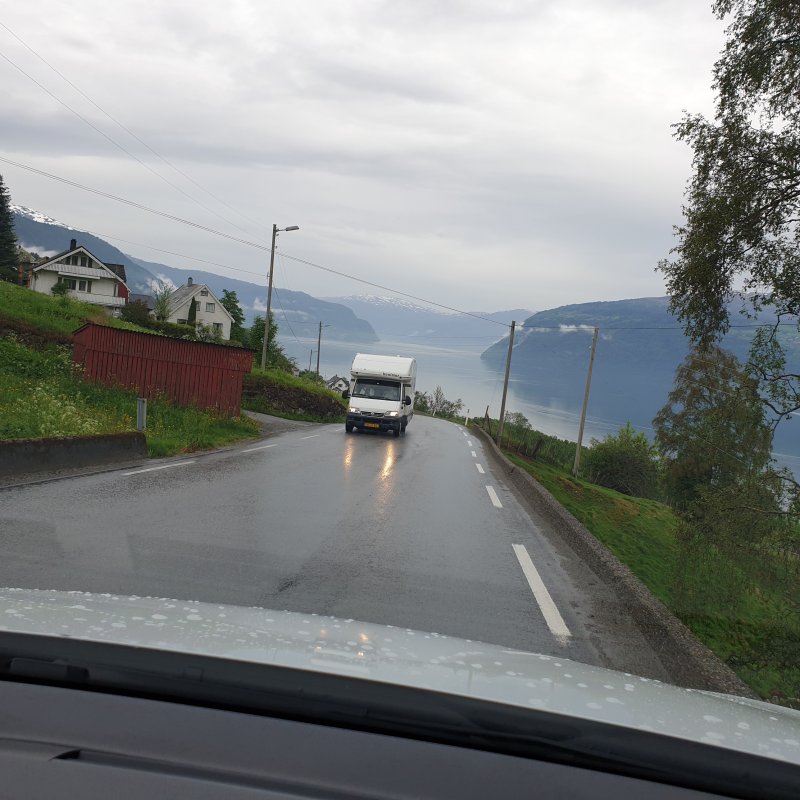
If you love unspoiled nature on a grand scale, Norway would just have to be on your travel bucket list.
Traveling by vehicle on a Norway land trip along the Atlantic west coast really does cover so much in the way of seeing so many of their iconic sites.
Even if you are not able to do the full route we did, I would suggest that visiting Norway is still worth doing to the locations above that appeal to you the most. If you are able to stay longer and do more, then so much the better.
What are your thoughts about completing a Norway road trip? Is this something that appeals to you? Please leave your thoughts in the comments below and as always, thanks so much for reading.
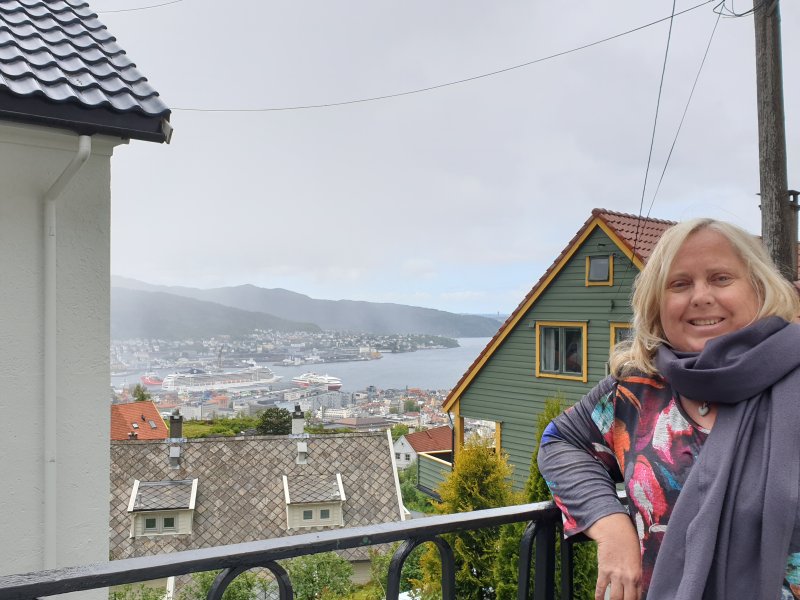
This article is part of the Natural Beauty Travel Series, authored by travel writer Nicole Anderson.
Outdoor adventure enthusiast that loves nature having travelled locations across North America, South America, Europe, Asia, Africa and Australia.
Passionate Travel Writer, Blogger and Influencer.














Leave a Reply